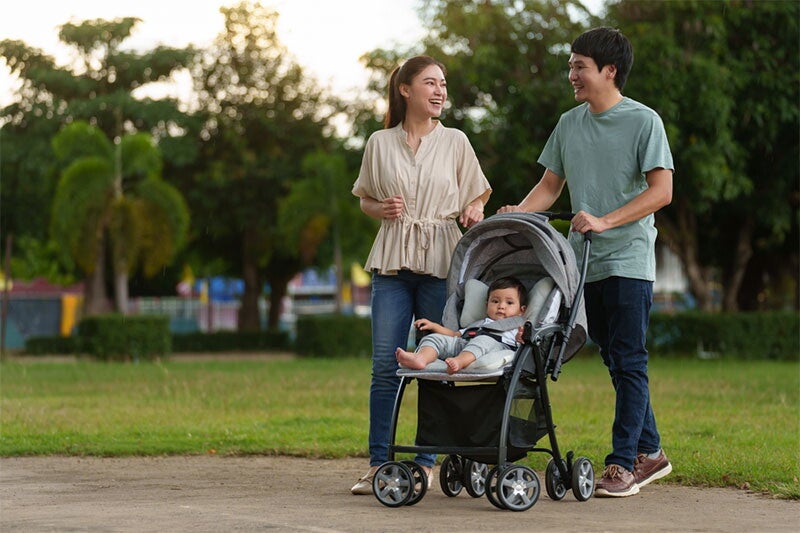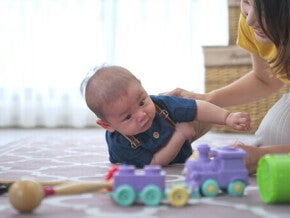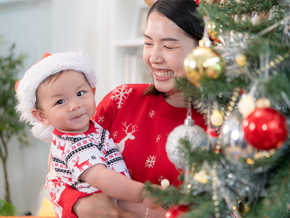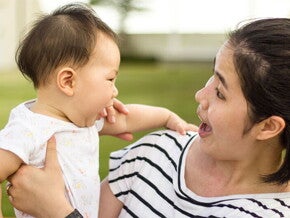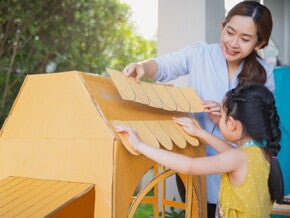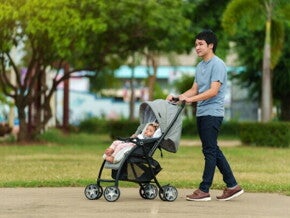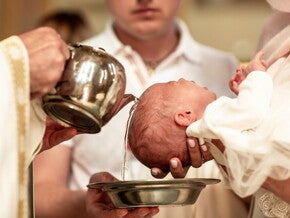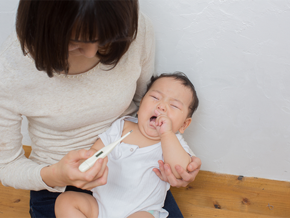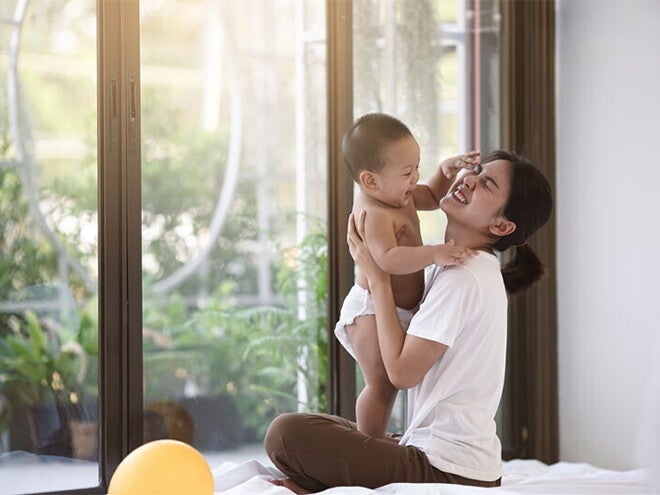
10 Filipino Myths About Raising Kids: What to Keep and Let Go
Who hasn't said "Pwera usog!" when someone praises your baby? These beliefs (or pamahiins), passed down through generations, are a unique part of Filipino culture. But as you go through your parenting journey, you might wonder: Which of these Filipino myths should you keep or let go?
Take a closer look at common Filipino myths on child-rearing—some heartwarming, some puzzling—so you can confidently choose those that work best for you and your child.
Myth #1: A Stranger’s Greeting Can Make Your Baby Sick
Many parents are familiar with usog, the belief that if a stranger admires or greets your baby (especially someone with strong energy or who is hungry at that moment), they might unintentionally make your little one feel unwell. How? Your baby can suddenly become fussy, develop a fever, or cry more than usual.
To prevent it, you learn to say, "Pwera usog!" Or have the stranger even dab a bit of their saliva on your baby's forehead or tummy.
Let go: While there isn't scientific evidence to support usog as a direct cause of illness, it’s natural to feel concerned when your baby is suddenly unwell. This belief can remind you to be careful when introducing your baby to new people and situations, helping you ensure they stay protected and don't get overwhelmed.
Myth #2: Don’t Bring Your Baby Outside in the Evening
Keeping your baby comfortable is key. The Filipino myth about hamog reminds you to dress your child appropriately, no matter the time of day.
Maybe your parents told you, "Wag mo ilabas yung bata sa gabi, baka mahamugan siya." Many believe that hamog (the dew in the cool, misty air often present in the evenings or early mornings) causes babies and children to catch colds or fevers.
Let go: Of course, you don't want your child to get sick. But viruses and bacteria cause colds and illnesses, not cool air itself. If you're going out with your baby at night, make sure your baby is dressed appropriately, keeping them comfortably warm and dry.
Myth #3: Don't Cut Your Baby's Hair Before Age 1
Many Filipinos say it's best not to cut your baby's hair until they hit their first birthday, or else "di na kakapal yung buhok niya" (the hair won't grow thick).
Let go: Yes, those first soft strands of baby hair are so precious. But the timing of your baby's first haircut has no bearing on how thick or thin their hair will be in the long run. According to the National Library of Medicine, genetics primarily determine hair thickness and texture.
Myth #4: Place Your Child’s First Hair Clippings in a Book to Make Them Smarter
This sweet ritual usually happens after their first haircut, often right when they turn one. You carefully save those little strands and stick them in a big book or dictionary because you've been told it will make your child super smart. Other variations of this myth involve having someone intelligent to do the first snip, passing on that brainpower!
Keep: Tucking hair into a book won't magically boost IQ. Intelligence is a trait shaped by genetics and a wide range of environmental factors, including nutrition and learning. But it’s a lovely way to preserve a memory, serving more as a cherished ritual than a rule.
Myth #5: If Your Child Doesn’t Finish All Their Food, Their Fingers Will Curl
The idea is simple: if you don't clean your plate, your fingers might curl or become deformed. That's a classic Filipino warning!
Let go: This Filipino myth has no grain of truth, of course. But it comes from a place of good intention—encourage kids not to waste food.
However, using fear to get children to understand the value of food may create a negative effect. A 2023 review published in Nutrients showed that when children experience ongoing negative emotions, like anxiety or stress due to fear, they often develop unhealthy eating habits.
Myth #6: Put a Wet Piece of Paper on Your Baby's Forehead to Stop Hiccups
When a baby gets hiccups, lolas will grab a little piece of whatever paper they can find (some prefer using thread, tissue, or even cotton). They moisten it with their saliva and stick it on a baby’s forehead. They claim it starts to work in just a few minutes. The explanation? The paper distracts the baby’s brain, breaking the hiccup cycle.
Let go: Pediatricians will tell you the paper does not have a direct physiological effect on hiccups, which typically stop on their own. Instead, try gentle stroking motions on the forehead (with or without paper) that some babies find calming.
Myth #7: Pinch Your Baby's Nose Regularly to Make It More Matangos
The thinking behind this Filipino myth? A growing child's cartilage is soft, you can supposedly help shape their nose to look more defined with a high bridge as they grow.
Let go: Everyone wants what’s best for baby. But, as a review on the genetics of nasal development shows, the shape of your child's nose comes down to genes. Simple actions, like pulling or pinching, won’t override this genetic blueprint. Best to just adore that cute nose exactly as it is!
Myth #8: Wrap a Feverish Child Tightly (Kulob) to Sweat Out the Sickness
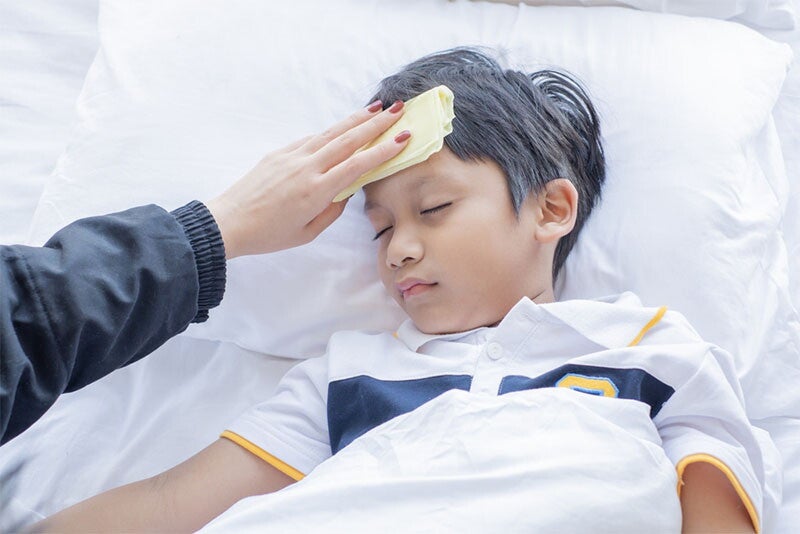
Consult your doctor when your child has a fever. Comfort them with light clothing, instead of doing kulob which can make things worse.
When your little one has a fever, you might have seen or heard of the practice called kulob, bundling them up in thick blankets or heavy clothes. The goal is to make them sweat a lot to help the fever break.
Let go: The practice of kulob can actually be unhelpful and even lead to overheating. Modern medical advice for managing a fever typically recommends wearing light clothing, drinking plenty of fluids, and occasionally taking a lukewarm sponge bath to gently cool your child down. Your doctor is always the best person to ask for advice on handling your child's fever.
Myth #9: Don't Let Your Child Sleep with Wet Hair, or They'll Get Sick
Many Filipinos grew up with this notion, and it has several versions. The main idea is that if you let your child go to bed with wet hair, something bad could happen. They might go blind, catch a nasty cold or pneumonia, or even lose their hair!
Let go: Waking up with a damp, cold scalp isn't the best feeling and can make your child feel a bit chilly if the room is cool. But it won't cause sickness, blindness, or baldness (though wet hair can be more prone to breakage).
According to the Sleep Foundation, colds are caused by viruses, not by wet hair itself. There's a slight possibility of fungal growth on the scalp if it remains damp for long periods, but no major health scares.
Myth #10: Don't Step Over a Sleeping Child
This pamahiin warns that stepping over a sleeping child—accidentally or not—can stunt their growth. In many Filipino homes, especially those with limited space, children often nap together on mats (banig) on the floor. This made it easy to step over someone when crossing the room, which is likely how the cautionary belief started!
Let go: This is one of those beliefs that can make you tiptoe very carefully around sleeping children, especially if they're all snoozing together on the floor! But there's no need to worry that this will affect how tall your child grows. As with nose shapes and hair thickness, your child's height is decided mainly by genes, good nutrition, and overall health.
Blending Folk Beliefs with Modern Wisdom
Understanding these Filipino myths about raising kids shows how much Pinoy culture shows loving concern for children. As you make parenting choices, you can blend the warmth of these pamahiins with current knowledge about child health and development.
Keep the wisdom that works, let go of the ones that don’t, and reshape the rest to fit your family’s needs today. After all, raising kids isn't just about following tradition; it's about building a future.
What other parenting Filipino myths or pamahiin did you grow up with? Share your favorites on the ParentTeam Moms and Dads Facebook group!
References
Cleveland Clinic. "How Tall Will Your Child Be?" Cleveland Clinic. Last modified November 21, 2022. Accessed May 27, 2025. https://health.clevelandclinic.org/child-growth-and-development.
Madela, Jennica Rose. "The Unbelievable Philippine Superstitions." Medium, February 1, 2022. Accessed May 27, 2025. https://medium.com/@jennicarosemadela/the-unbelievable-philippine-superstitions-1b38898a8086.
Martinez, Rudolf Cymorr Kirby P., Augustine Beth D. Cortez, and Vanessa Joy M. Contreras. "Understanding the concept of Usog among the Aetas of Nabuclod, Pampanga, Philippines." Journal of Social Health 2, no. 1 (February 2019). https://osf.io/bt6gj/download.
Mayo Clinic Staff. "What's the best way tell how tall a child will be as an adult?" Mayo Clinic. Last modified January 25, 2025. Accessed May 27, 2025. https://www.mayoclinic.org/healthy-lifestyle/childrens-health/expert-answers/child-growth/faq-20057990.
Nemours KidsHealth. "Colds." KidsHealth. Medically reviewed by Rachel S. Schare, MD, November 2020. Accessed May 27, 2025. https://kidshealth.org/en/parents/cold.html.










